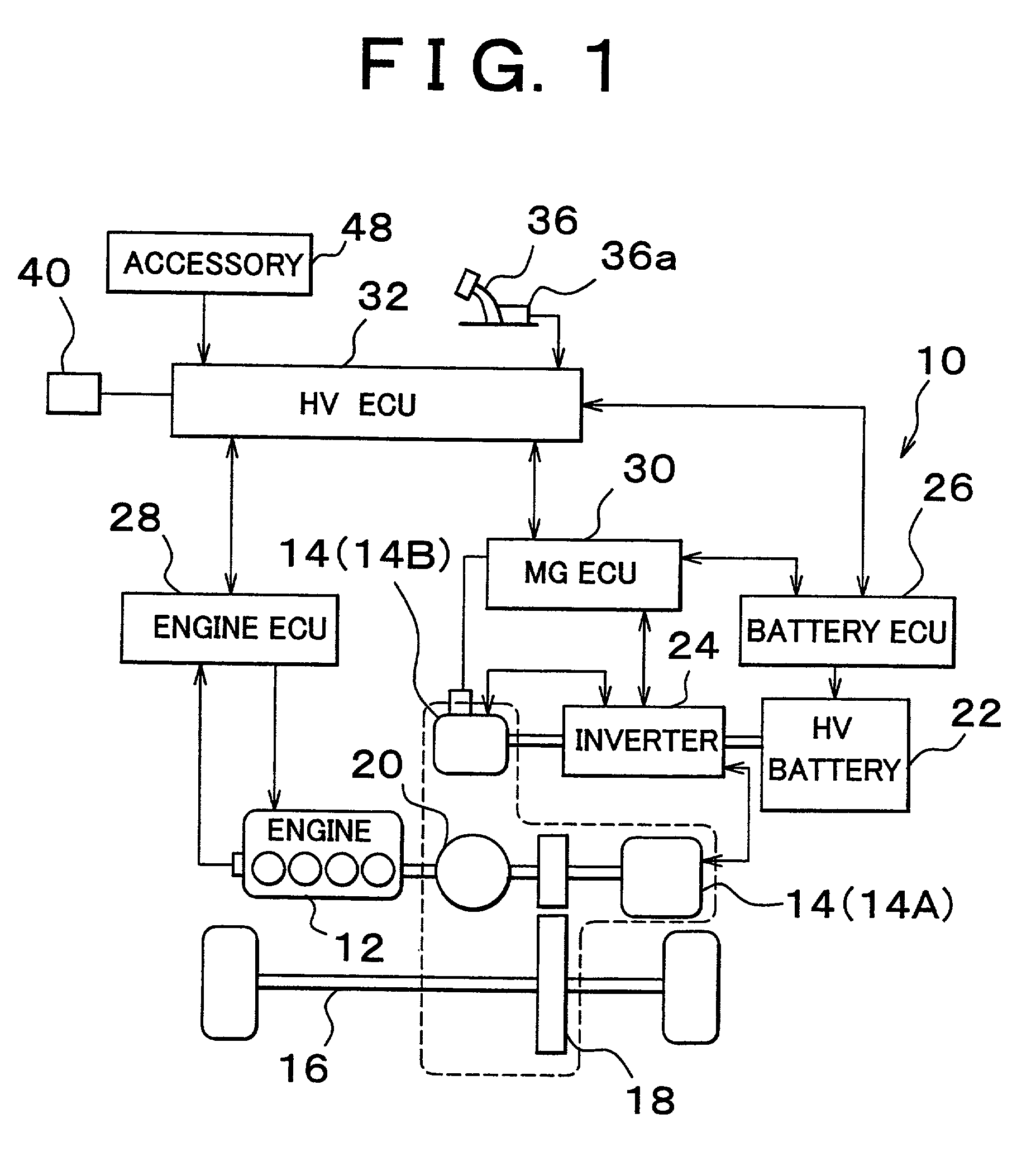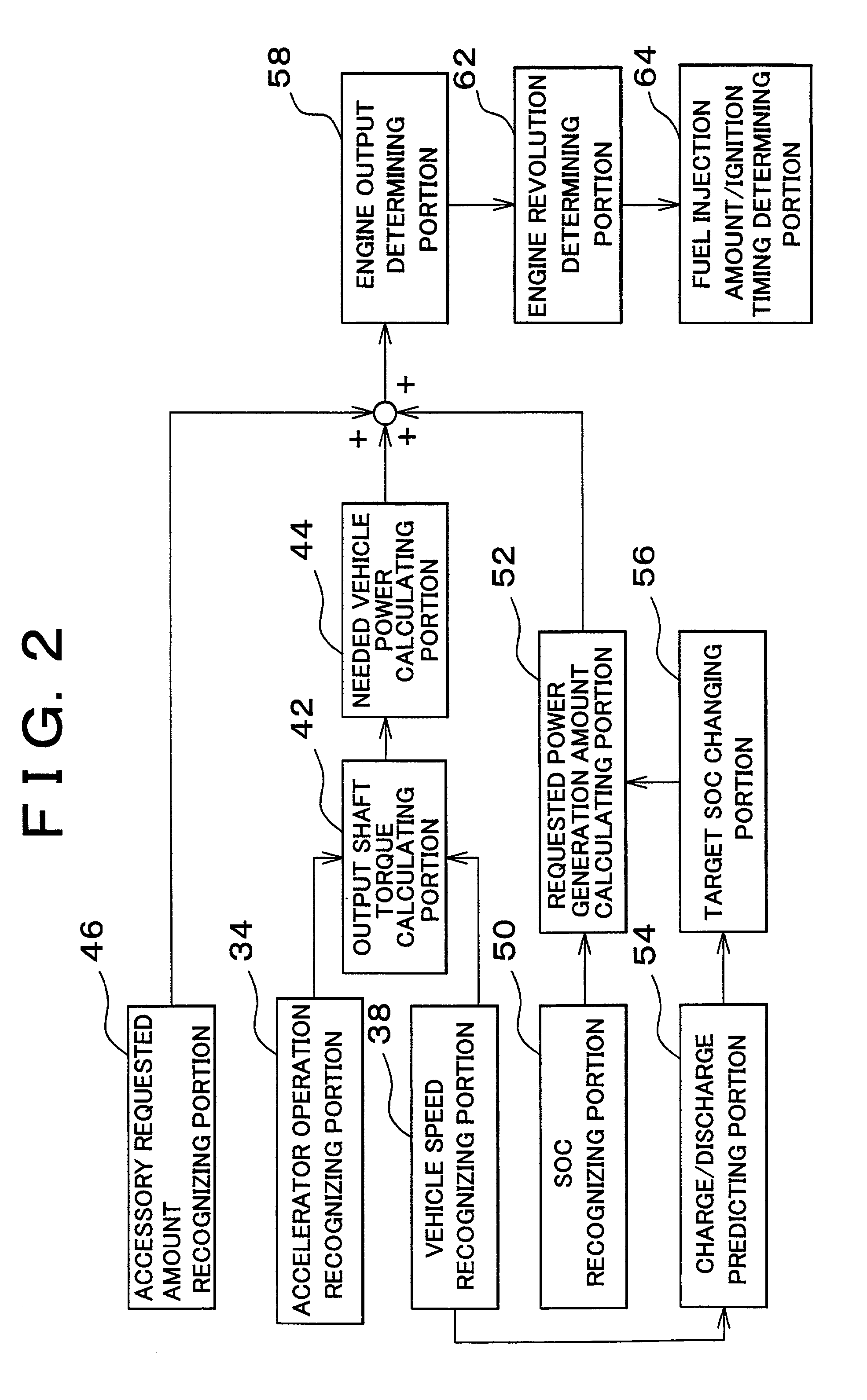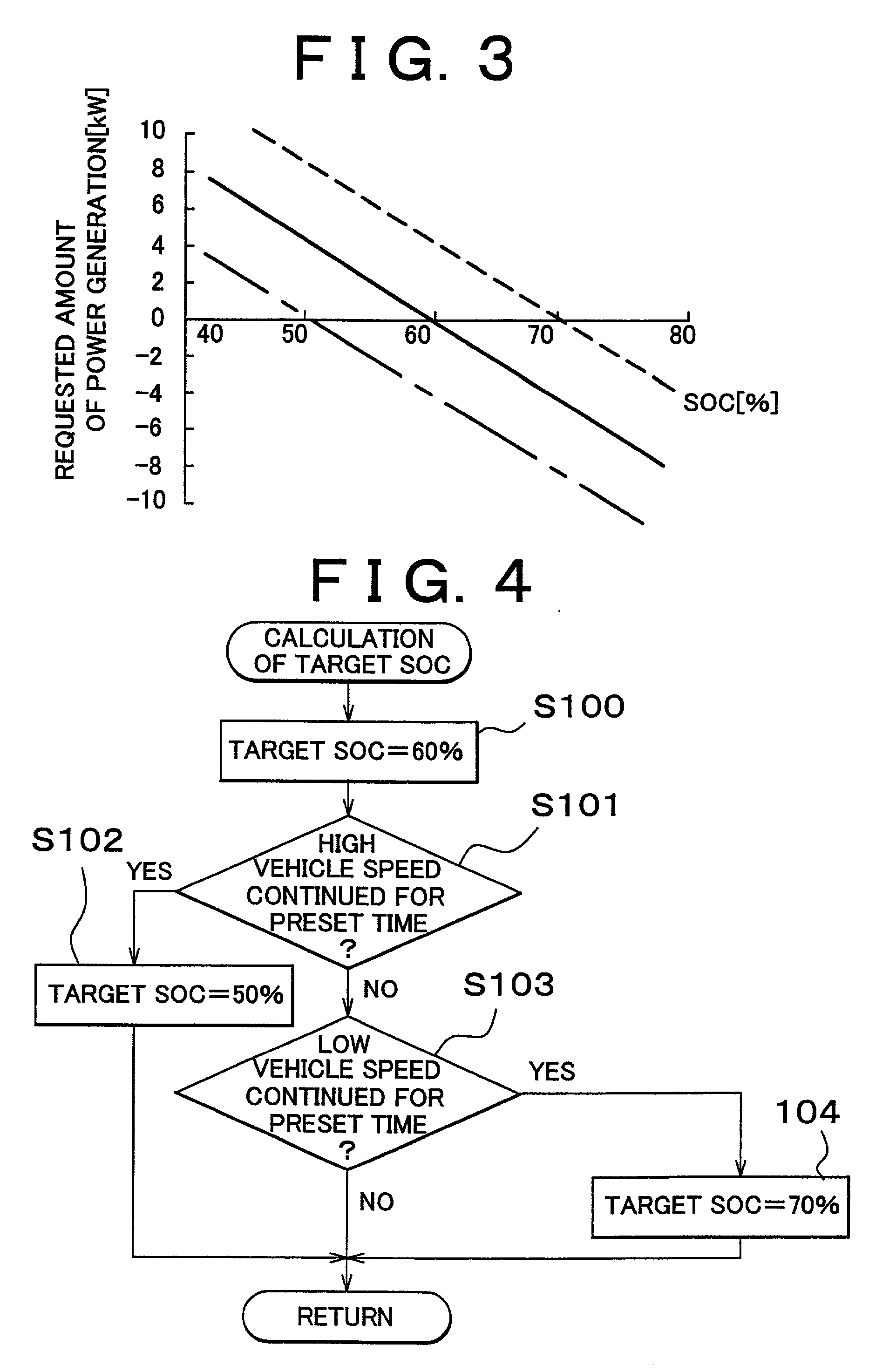Electric energy charging control apparatus and method for hybrid vehicle
- Summary
- Abstract
- Description
- Claims
- Application Information
AI Technical Summary
Benefits of technology
Problems solved by technology
Method used
Image
Examples
Embodiment Construction
[0025] A preferred embodiment of the invention (hereinafter, referred to as "embodiment") will be described hereinafter with reference to the accompanying drawings.
[0026] FIG. 1 shows a conceptual diagram of a construction of a hybrid vehicle (HV) 10 in accordance with the embodiment of the invention. The hybrid vehicle 10 includes, as drive power sources, an internal combustion engine (hereinafter, simply referred to as "engine"), for example, a gasoline engine, a diesel engine, etc., and a motor-generator (MG) 14. In FIG. 1, the MG 14 is illustrated as an electric motor 14A and a generator 14B for the sake of convenience in illustration. However, in accordance with the running state of the hybrid vehicle 10, the electric motor 14A can function as a generator, and the generator 14B can function as an electric motor.
[0027] The hybrid vehicle 10 further includes: a speed reducer 18 for transmitting power generated by the engine 12 or the MG 14 toward a wheel side 16 and transmitting ...
PUM
 Login to View More
Login to View More Abstract
Description
Claims
Application Information
 Login to View More
Login to View More - R&D
- Intellectual Property
- Life Sciences
- Materials
- Tech Scout
- Unparalleled Data Quality
- Higher Quality Content
- 60% Fewer Hallucinations
Browse by: Latest US Patents, China's latest patents, Technical Efficacy Thesaurus, Application Domain, Technology Topic, Popular Technical Reports.
© 2025 PatSnap. All rights reserved.Legal|Privacy policy|Modern Slavery Act Transparency Statement|Sitemap|About US| Contact US: help@patsnap.com



